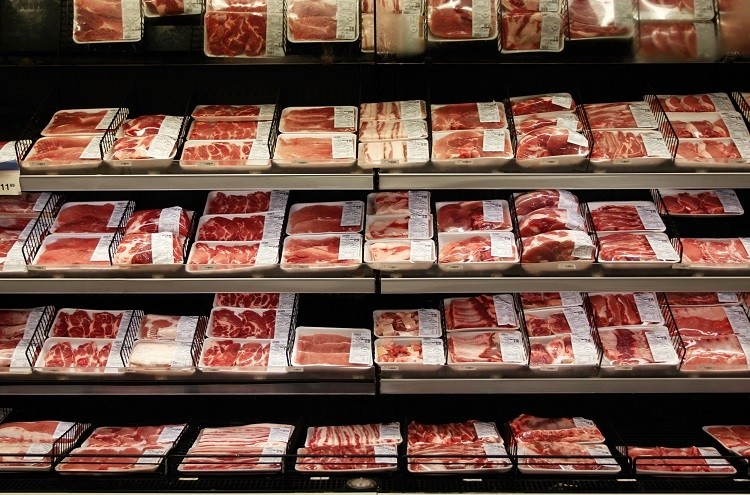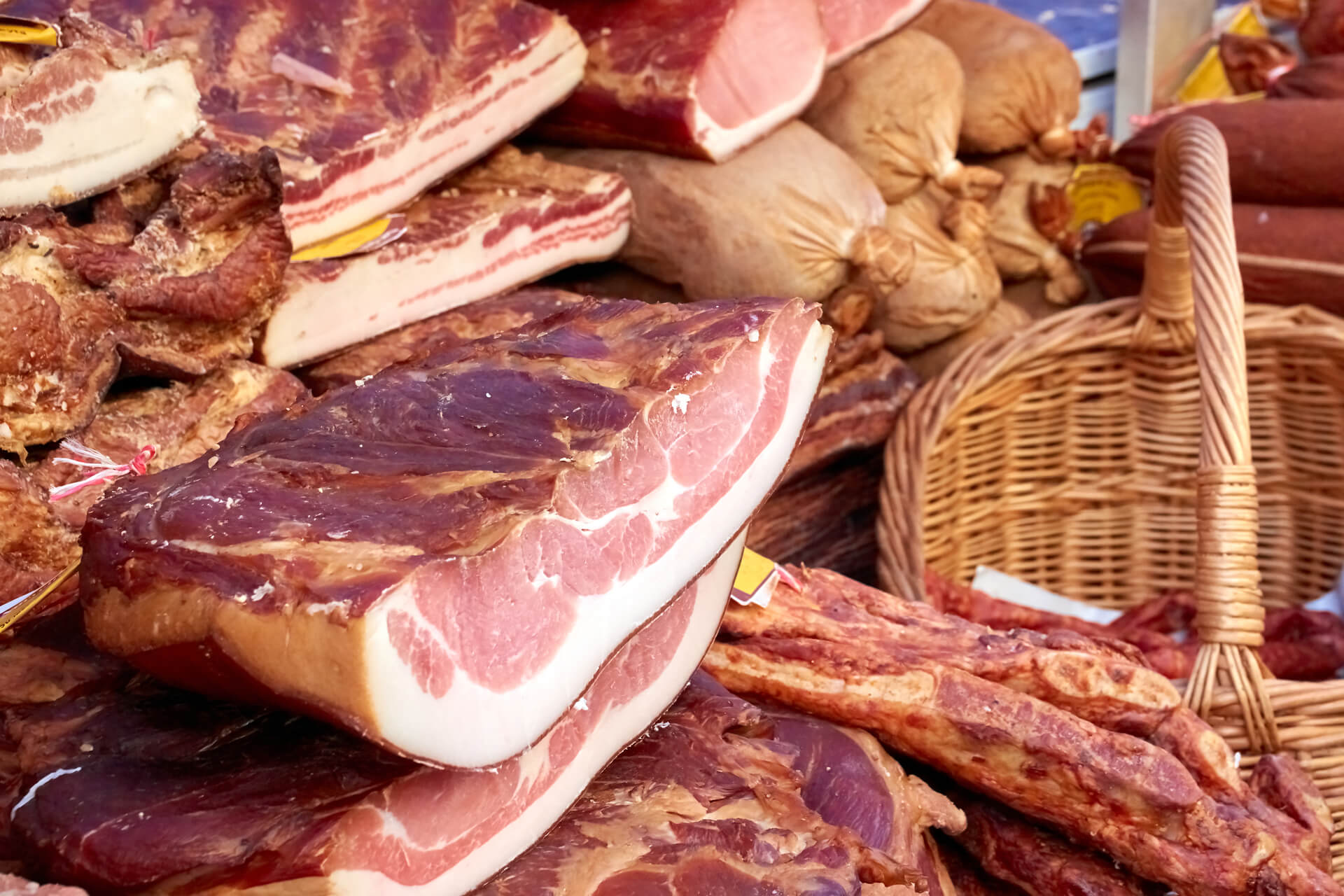Go To Bagley Farms Meat Market Edwardsville IL for Farm-Fresh Meat and Specialty Cuts
Go To Bagley Farms Meat Market Edwardsville IL for Farm-Fresh Meat and Specialty Cuts
Blog Article
Uncover the Art of the Butcher's Cut in a Modern Meat Market
In the ever-evolving landscape of modern meat markets, the butcher's cut has transcended its traditional origins, merging olden workmanship with contemporary techniques. What genuinely establishes the contemporary butcher apart is their capacity to create a much deeper connection in between consumers and the origins of their meat.
Evolution of Butchery Methods

The mid-20th century saw butchery strategies additionally improved by scientific understandings into muscle biology and meat aging, boosting both tenderness and taste. Innovations like vacuum cleaner product packaging and refrigeration expanded product shelf-life, allowing butchers to diversify offerings and enhance quality control. This duration additionally marked the surge of specialized equipment, such as band saws and meat slicers, which enhanced precision and effectiveness in meat processing.
Computerized systems currently assist in monitoring animal provenance and enhancing cuts to meet details customer preferences. In addition, a revival in artisanal butchery has actually arised, blending standard abilities with contemporary knowledge to provide to customers seeking ethical and sustainable meat alternatives.

Recognizing Meat Cuts

Comprehending the details of meat cuts is vital for both butchers and consumers seeking top quality and worth. For butchers, precise cuts show ability and regard for the craft, ensuring very little waste and optimal yield.
The main categories of meat cuts include primal, sub-primal, and retail cuts. Primal cuts, such as the loin, rib, and chuck, are the large sections initially separated from the carcass. Butchers then break these down further right into sub-primal cuts, before finally creating retail cuts readily available to consumers, like ribeye or tenderloin. Each stage requires mindful interest to anatomical structure and muscular tissue make-up.
Comprehending muscular tissue composition is crucial; muscular tissues used much more regularly by the animal tend to be harder and are best matched for slow-moving cooking approaches, while less-used muscles, like those discovered in the loin, are much more tender and ideal for cooking or roasting. Familiarity with these differences empowers consumers to make enlightened options, boosting their culinary endeavors.
Picking High Quality Meat
Selecting the best meat involves even more than simply choosing an aesthetically attractive piece from the screen. The art of choosing quality meat calls for a discerning eye and knowledge of specific attributes that signify quality and quality.
Second of all, take into consideration the marbling, which refers to the white streaks of fat within the muscle mass. Proper marbling is a vital indicator of inflammation and taste, as it thaws throughout food preparation, improving the meat's juiciness. Remember, greater marbling frequently correlates with superior high quality cuts, such as USDA Prime.
Appearance is one more critical variable; meat should really feel firm to the touch, not slimy or extremely soft. In addition, bear in mind the scent. Fresh meat needs to have a clean, neutral scent, devoid of any sour or repulsive odors.
Coupling Cuts With Food Preparation Techniques
Efficiently coupling cuts of meat with the ideal cooking methods is essential for achieving ideal taste and structure. Different cuts vary in tenderness, marbling, and connective cells content, each requiring particular methods to unlock their capacity. For instance, tender cuts like filet mignon and ribeye, with their inherent marbling, gain from high-heat, look at this website quick-cooking methods such as cooking or pan-searing. These methods enhance the meat's all-natural visit their website flavors and make certain a juicy finish.
On the other hand, tougher cuts like brisket and chuck roast are abundant in collagen, which damages down into gelatin when cooked slowly. These cuts are perfect for braising or slow roasting, allowing the meat to tenderize with time and establish deep, intricate flavors. Likewise, cuts such as short ribs and pork shoulder prosper with slow-cooking approaches, where expanded cooking times transform their robust textures into succulent meals.
Lamb shanks and oxtail, which require long term food preparation to soften, are perfect prospects for stewing or slow-moving simmering. These methods coax out rich, hearty tastes while maintaining dampness. By recognizing the one-of-a-kind characteristics of each cut, chefs and home chefs alike can raise their culinary creations, making certain each dish is both pleasing and unforgettable.
The Butcher's Role Today
Navigating the advancing landscape of the modern meat market, the butcher's role today extends past simple preparation of cuts. Contemporary butchers are culinary craftsmens, teachers, and supporters for lasting methods. They connect the gap in between the ranch and the fork by making sure honest sourcing, understanding animal husbandry, and prioritizing openness in the supply chain. This change reflects the expanding consumer demand for quality over amount, where provenance and pet welfare are paramount.
In addition to crafting specific cuts, butchers currently involve directly with consumers, supplying cooking advice and tailoring options to match individual demands and choices. Their knowledge in meat aging, marbling, and flavor accounts empowers customers to make informed decisions, improving their cooking experiences. This individualized solution exemplifies the butcher's progressing role as a trusted advisor in the kitchen.
Moreover, butchers are essential in lessening waste, using whole animals to produce varied products such as sausages and stocks - bagley farms meat market edwardsville il. check my source This detailed strategy not only values the animal but also lines up with modern sustainability objectives. By doing this, the modern-day butcher symbolizes both practice and innovation, adapting to an ever-changing market while maintaining the virtuosity and honesty of their craft

Conclusion
Mastery in comprehending diverse meat cuts and top quality indications equips butchers to offer informed suggestions, aligning certain cuts with optimum cooking approaches. By honoring historical techniques while welcoming modern demands, the butcher's role continues to be essential in today's advanced meat market.
Report this page